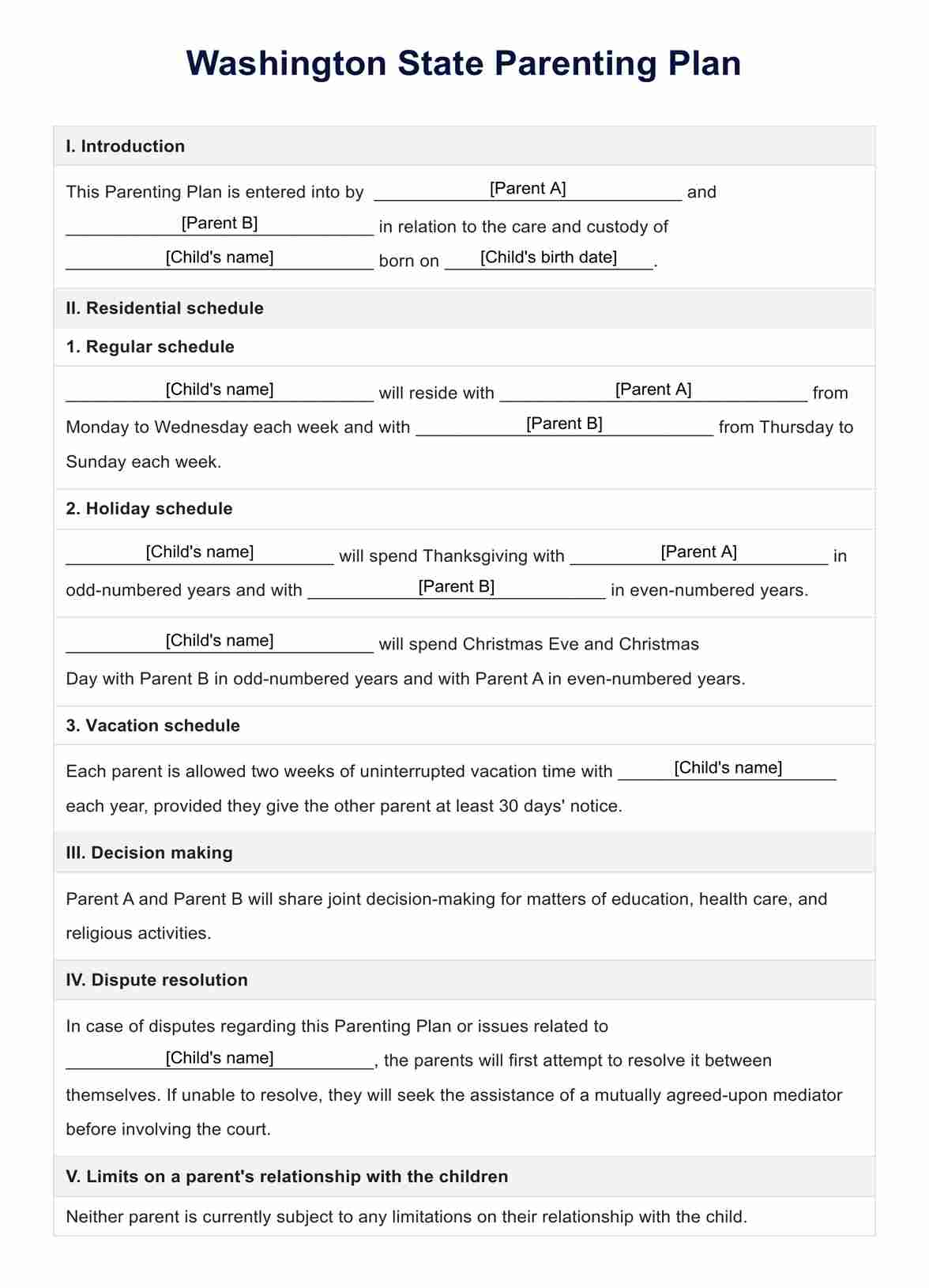Parents who are separating, divorcing, or unmarried parents looking to formalize co-parenting arrangements typically use the Washington State Parenting Plan.

Washington State Parenting Plans
Get a comprehensive understanding of Washington State Parenting Plans. Learn how they work when to use them, and more! Download our free PDF today!
Washington State Parenting Plans Template
Commonly asked questions
The parenting plan is used when parents decide to separate or divorce or if they are unmarried but wish to establish a formal arrangement regarding the care and upbringing of their child.
Parents or their legal representatives draft the plan, detailing all aspects of the child's care, including living arrangements, decision-making responsibilities, and processes for dispute resolution. The drafted plan is then submitted to the court for approval, after which it becomes a legally binding document.
EHR and practice management software
Get started for free
*No credit card required
Free
$0/usd
Unlimited clients
Telehealth
1GB of storage
Client portal text
Automated billing and online payments











